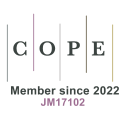REFERENCES
1. United Nations India. 2020. Available from: https://in.one.un.org [Last accessed on 24 Jul 2023].
2. The World Bank. Sustainable cities and communities. Available from: https://www.worldbank.org/en/topic/sustainable-communities [Last accessed on 24 Jul 2023].
4. Yoshida T, Yamagata Y, Chang S, et al. Chapter 7 - Spatial modeling and design of smart communities. Urban Syst Des 2020:199-255.
5. Fleischhauer M. The role of spatial planning in strengthening urban resilience. In: Pasman HJ, Kirillov IA, editors. Resilience of cities to terrorist and other threats. Dordrecht: Springer; 2008. pp. 273-98.
6. March A, Leon J. SOAC 2013 conference: urban planning for disaster risk reduction: establishing 2nd wave criteria. 2013. Available from: https://soacconference.com.au/wp-content/uploads/2013/12/March-Environment.pdf [Last accessed on 24 Jul 2023].
7. Mcmillan JM, Birkmann J, Tangwanichagapong S. Chapter 13 - climate risk information as a basis for adaptive spatial planning: a case study from Thailand. In: Pal I, Shaw R, Djalante R, Shrestha S, editors. Disaster resilience and sustainability. Amsterdam, The Netherlands: Elsevier; 2021. pp. 301-20.
8. Greiving S, Fleischhauer M. Spatial planning response to natural and technological hazards. Special paper - geological survey of Finland. 2006; pp. 109-23. Available from: https://www.researchgate.net/publication/252088682_Spatial_planning_response_to_natural_and_technological_hazards [Last accessed on 24 Jul 2023].
9. Messages from world cities day 2023. Available from: https://unhabitat.org [Last accessed on 24 Jul 2023].
10. Burby RJ, Deyle RE, Godschalk DR, Olshansky RB. Creating hazard resilient communities through land-use planning. Nat Hazards Rev 2000;1:99-106.
12. Godschalk DR. Urban hazard mitigation: creating resilient cities. Nat Hazards Rev 2003;4:136-43.
13. Clark-ginsberg A, Blake JS, Patel K. Disaster risk reduction in cities: towards a new normal. Appl Sci 2021;11:2517.
14. Hardoy J, Pandiella G, Barrero LSV. Local disaster risk reduction in Latin American urban areas. Environ Urban 2011;23:401-13.
15. Hayat P. Smart cities: a global perspective. India Q 2016;72:177-91. Available from: https://www.jstor.org/stable/48505495 [Last accessed on 24 Jul 2023]
16. The 17 goals. United Nations. Available from: https://sdgs.un.org/goals [Last accessed on 24 Jul 2023].
17. Silva BN, Khan M, Han K. Towards sustainable smart cities: a review of trends, architectures, components, and open challenges in smart cities. Sustain Cities Soc 2018;38:697-713.
18. Ojo A, Dzhusupova Z, Curry E. Exploring the nature of the smart cities research landscape. In: Gil-Garcia J, Pardo T, Nam T, editors. Smarter as the New Urban Agenda. Cham: Springer; 2016.
19. Mohanty SK, Chatterjee R, Shaw R. Building resilience of critical infrastructure: a case of impacts of cyclones on the power sector in odisha. Climate 2020;8:73.
20. Park E, del Pobil A, Kwon S. The role of internet of things (IoT) in smart cities: technology roadmap-oriented approaches. Sustainability 2018;10:1388.
21. Available from: https://www.thehindu.com/news/national/indias-urban-population-to-stand-at-675-million-in-2035-behind-chinas-1-billion-un/article65584707.ece [Last accessed on 24 Jul 2023].
22. Smart cities mission 2015. Available from: https://smartcities.gov.in/ [Last accessed on 24 Jul 2023].
23. Rumi A. India’s smart cities mission, 2015-2021: a stocktaking. Available from: https://policycommons.net/artifacts/1807931/indias-smart-cities-mission-2015-2021/2542555/ [Last accessed on 24 Jul 2023].
24. Munawar HS, Mojtahedi M, Hammad AWA, Kouzani A, Mahmud MAP. Disruptive technologies as a solution for disaster risk management: a review. Sci Total Environ 2022;806:151351.
25. Reimagining pune: mission smart city. 2016. Available from: https://www.pmc.gov.in/informpdf/Smart_City/SPC_Part_1.pdf [Last accessed on 24 Jul 2023].
26. Joshi S. Unified development control and promotion regulations for maharashtra state. 2020. Available from: https://media.biltrax.com/unified-development-control-and-promotion-regulations-for-maharashtra-state-2020/ [Last accessed on 26 Jul 2023].
27. Disaster management plan 2016. Pune Municipal Corporation. Available from: https://www.pmc.gov.in/mr?main=marathi [Last accessed on 26 Jul 2023].
28. Kodag S, Mani SK, Balamurugan G, Bera S. Earthquake and flood resilience through spatial planning in the complex urban system. Prog Dis Sci 2022;14:100219.
29. Virtudes A. ‘Good’ governance principles in spatial planning at local scale. Procedia Eng 2016;161:1710-4.
30. Georgiadis A, Christodoulou P, Zinonos Z. Citizens’ perception of smart cities: a case study. Appl Sci 2021;11:2517.
31. Donner W, Rodríguez H. Population composition, migration and inequality: the influence of demographic changes on disaster risk and vulnerability. Soc Forces 2008;87:1089-114. Available from: http://www.jstor.org/stable/20430904 [Last accessed on 24 Jul 2023]
32. Su Q, Chen K, Liao L. The impact of land use change on disaster risk from the perspective of efficiency. Sustainability 2021;13:3151.
33. Saxena MR. Role of open spaces in disaster management. 2016. Available from: https://www.researchgate.net/publication/312661449_Role_of_Open_Spaces_in_Disaster_Management [Last accessed on 24 Jul 2023].
34. Ehrlich D, Kemper T, Pesaresi M, Corbane C. Built-up area and population density: two Essential Societal Variables to address climate hazard impact. Environ Sci Policy 2018;90:73-82.






